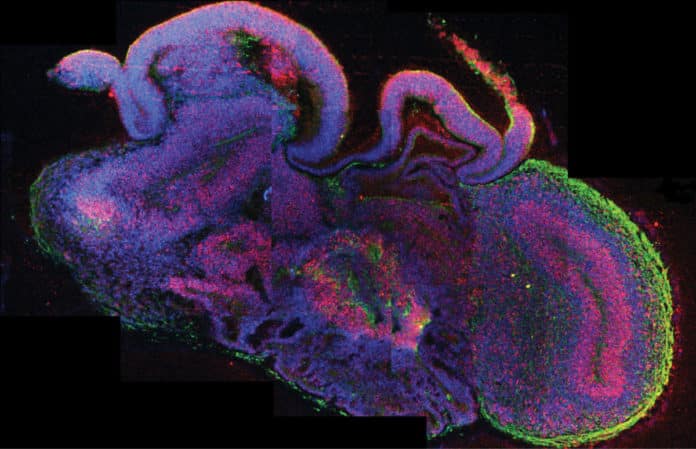--Must See--
Brain Organoids Created With Retinal Pigmented Cells
A Research team at the D’Or Institute for Research and Education stated that they have improved the initial steps of a standard protocol and have produced organoids displaying regionalized brain structures, including retinal pigmented cells.
As per statements by researchers, Organoid cultivation in suspension culture requires agitation in low shear stress to allow for nutrient diffusion, which preserves tissue structure. Multiplex systems for organic cultivation have been indicated but if they fulfill similar shear pressure parameters as the regularly used spinner flask and its correlation with the successful generation of mind organoids hasn’t yet been determined.
“The bioreactor had reduced speed and higher shear stress areas that may affect cell-aggregate growth, based on volume, whereas the calculated variables of the steering plates were nearer to those of their spinning flask.” – They further added.
“Our protocol enhances the first steps of the standard brain organoid formation, as well as the produced organics displayed regionalized brain structures, including retinal pigmented cells. In general, we conclude that suspension culture on orbital steering plates is a cost-effective practical alternative to previously described platforms for the cultivation of brain organoids for study and multiplex testing” – the
researchers said.
In this technique, cells extracted from urine or skin of volunteers have been transformed into stem cells and then into neurons and other neural cell types. They’re cultivated for months until they start forming agglomerates that resemble an embryonic brain.
For the last few decades, scientists are attempting to perfect this model to create organoids increasingly complex and like those on later phases of development.
In partnership with the Federal University of Rio de Janeiro (UFRJ), scientists in the D’Or Institute Researchers have cultivated human mind organoids to study neurological diseases and the effects of new drugs on the nervous system.
They have placed nerve cells in a nutrient-rich liquid, like the development environment of the human embryo. From there, those mini-brains develop within a self-regulated procedure. To put it differently, all one has to do is make sure they have the right environment to develop.
Recently, the team led by Stevens Reed, Ph.D., scientific director in the D’Or Institute, has been able to refine the environment where the cells are maintained.
Later Rehen stated that These organoids are a demonstration that it is likely to replicate, in the lab, increasingly advanced gradients of human brain development, and that We have developed a cheap suspension system on orbital steering plates as a substitute for the cultivation of brain organoids with retinal pigmented cells.”
Published Paper in BMC Developmental: “Computational fluid dynamic analysis of physical forces playing a role in brain organoid cultures in two different multiplex platforms”






























